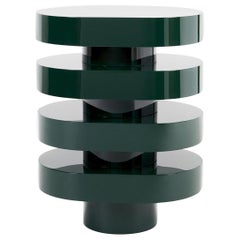Aglae Tiered Side Table
2010s French Modern Side Tables
Wood
People Also Browsed
Vintage 1930s Czech Art Deco Lounge Chairs
Beech, Sheepskin
21st Century and Contemporary British Organic Modern Wall Lights and Sco...
Plaster
Early 2000s Italian Mid-Century Modern Chandeliers and Pendants
Brass
21st Century and Contemporary Italian Mid-Century Modern Table Lamps
Plastic
Late 20th Century Italian Space Age Lounge Chairs
Mohair, Wood
2010s American Modern Lounge Chairs
Mohair, Walnut
2010s South African Minimalist Side Tables
Marble
21st Century and Contemporary Portuguese Modern Armchairs
Brass
2010s South African Modern Lounge Chairs
Steel, Brass
2010s Portuguese Modern Lounge Chairs
Bouclé
Late 20th Century Italian Space Age Lounge Chairs
Wood, Mohair
21st Century and Contemporary American Modern Ottomans and Poufs
Upholstery, Wood
2010s American Modern Table Lamps
Glass, Resin
2010s American Modern Chairs
Resin, Foam
21st Century and Contemporary European Art Deco Sofas
Velvet
2010s Mexican Mid-Century Modern Side Tables
Wood, Hardwood, Oak, Plywood
A Close Look at Modern Furniture
The late 19th and early 20th centuries saw sweeping social change and major scientific advances — both of which contributed to a new aesthetic: modernism. Rejecting the rigidity of Victorian artistic conventions, modernists sought a new means of expression. References to the natural world and ornate classical embellishments gave way to the sleek simplicity of the Machine Age. Architect Philip Johnson characterized the hallmarks of modernism as “machine-like simplicity, smoothness or surface [and] avoidance of ornament.”
Early practitioners of modernist design include the De Stijl (“The Style”) group, founded in the Netherlands in 1917, and the Bauhaus School, founded two years later in Germany.
Followers of both groups produced sleek, spare designs — many of which became icons of daily life in the 20th century. The modernists rejected both natural and historical references and relied primarily on industrial materials such as metal, glass, plywood, and, later, plastics. While Bauhaus principals Marcel Breuer and Ludwig Mies van der Rohe created furniture from mass-produced, chrome-plated steel, American visionaries like Charles and Ray Eames worked in materials as novel as molded plywood and fiberglass. Today, Breuer’s Wassily chair, Mies van der Rohe’s Barcelona chair — crafted with his romantic partner, designer Lilly Reich — and the Eames lounge chair are emblems of progressive design and vintage originals are prized cornerstones of collections.
It’s difficult to overstate the influence that modernism continues to wield over designers and architects — and equally difficult to overstate how revolutionary it was when it first appeared a century ago. But because modernist furniture designs are so simple, they can blend in seamlessly with just about any type of décor. Don’t overlook them.
Finding the Right Pedestals for You
Antique and vintage pedestals are charming and elegant alternatives to regular tables. Reminiscent of Greek and Roman majesty, they increase the grandeur in any space.
As furniture, pedestals are works of art in themselves. Often, they recall the beauty and craftsmanship of ancient Greek columns. They can be a central element in a living room or used as side tables. With compact surfaces, they make perfect games tables for playing card games or chess.
Pedestals may be focal points, but they also draw attention to and enhance other items. They offer the ideal foundation for displaying decorative objects, potted plants, table lamps and more. With their stately forms, they can be unique coffee tables.
On 1stDibs, find pedestals in a variety of designs, including Revival pieces inspired by classical Greek and Roman architecture and mid-century modern pedestals. Explore a collection of wooden, stone, metal or marble pedestals to find a dazzling addition to any room.
